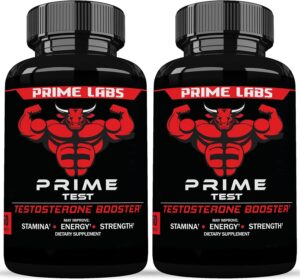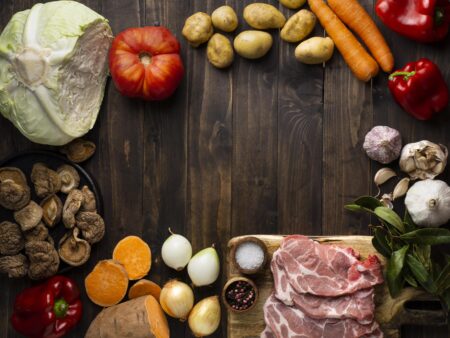
The Pritikin Diet is a low-fat, high-fibre diet designed to promote heart health, weight loss, and overall well-being. Developed in the 1970s by Nathan Pritikin, a pioneer in lifestyle medicine, the diet emphasizes whole, unprocessed foods such as fruits, vegetables, whole grains, lean proteins, and legumes. It also promotes regular physical activity as a key component of a healthy lifestyle. Over the years, the Pritikin Diet has evolved and gained popularity for its potential benefits in reducing cholesterol levels, lowering blood pressure, and managing diabetes.
In this article, we will explore the Pritikin Diet in detail, including its principles, benefits, potential drawbacks, and considerations for those interested in adopting it. We will also provide a disclaimer regarding the need for professional medical advice when considering any significant dietary changes.
What is the Pritikin Diet?
The Pritikin Diet is based on the idea that a diet low in fat and rich in fibre can prevent and even reverse many lifestyle-related diseases, particularly cardiovascular diseases. Nathan Pritikin himself developed the diet after being diagnosed with heart disease and successfully reversing his condition through his dietary and lifestyle changes.
Key Principles of the Pritikin Diet:
- Low in Fat: The diet restricts the intake of dietary fats, particularly saturated and trans fats, which are believed to contribute to heart disease and other health issues. Fat intake is limited to about 10% of total daily calories.
- High in Fiber: The diet encourages the consumption of high-fibre foods like fruits, vegetables, and whole grains. Fiber is essential for digestive health and helps control blood sugar levels and cholesterol.
- Emphasis on Whole Foods: Processed and refined foods, especially those high in sugar and unhealthy fats, are discouraged. The focus is on whole, natural foods that are minimally processed.
- Plant-Based Approach: Although not strictly vegetarian, the Pritikin Diet emphasizes plant-based foods. Animal proteins are limited, and lean meats, fish, and low-fat dairy products are preferred.
- Regular Physical Activity: Exercise is considered a core component of the Pritikin lifestyle. The program encourages regular aerobic and resistance training exercises to enhance cardiovascular fitness, build muscle mass, and maintain a healthy weight.
Benefits of the Pritikin Diet
The Pritikin Diet has several potential benefits, especially for individuals at risk of cardiovascular diseases and those looking to adopt a healthier lifestyle. Here are some of the key benefits:
- Heart Health Improvement: The diet’s emphasis on low-fat, high-fibre foods is specifically designed to improve heart health. Studies have shown that following the Pritikin Diet can help lower LDL cholesterol (the “bad” cholesterol), reduce blood pressure, and decrease the risk of heart attacks and strokes.
- Weight Loss and Management: The Pritikin Diet is effective for weight loss and weight management due to its low-calorie density approach. By focusing on foods that are low in calories but high in nutrients, it allows individuals to eat larger portions without consuming excessive calories.
- Blood Sugar Control: The diet’s high-fibre content helps slow the absorption of sugar into the bloodstream, which can help stabilize blood sugar levels. This is particularly beneficial for people with type 2 diabetes or those at risk of developing diabetes.
- Reduced Risk of Certain Cancers: Some research suggests that a diet rich in fruits, vegetables, and whole grains can help reduce the risk of certain types of cancers, such as colorectal and breast cancer. The Pritikin Diet’s emphasis on these foods may provide protective benefits.
- Improved Digestion and Gut Health: The high fibre content in the Pritikin Diet promotes healthy digestion and regular bowel movements, reducing the risk of constipation and other digestive issues.
- Promotes a Balanced Lifestyle: The combination of healthy eating and regular physical activity helps foster a balanced and sustainable lifestyle. The diet is not just about food; it is about creating a holistic approach to health and wellness.
Potential Drawbacks of the Pritikin Diet
While the Pritikin Diet offers numerous health benefits, it also has some potential drawbacks that individuals should consider before adopting it.
- Restrictive Nature: The diet’s strict guidelines on fat intake can be challenging to follow, especially for individuals used to a higher-fat diet. It requires a significant lifestyle change, which may not be sustainable for everyone.
- Potential for Nutrient Deficiencies: With its emphasis on low-fat foods, there is a risk of not getting enough healthy fats, which are essential for brain function, hormone production, and absorption of fat-soluble vitamins (A, D, E, and K). People following the Pritikin Diet may need to be mindful of including adequate sources of healthy fats, such as avocados, nuts, and seeds.
- Lack of Flexibility: The diet’s rigid structure may not accommodate individual preferences, cultural foods, or specific dietary needs. This lack of flexibility can make it difficult for some people to adhere to the diet in the long term.
- Social and Practical Challenges: Dining out or attending social gatherings can be challenging for individuals on the Pritikin Diet, as many foods available in restaurants or at events do not align with the diet’s guidelines. This can lead to feelings of isolation or frustration.
- Potential Overemphasis on Carbohydrates: While the Pritikin Diet promotes whole grains and complex carbohydrates, some critics argue that it may not be suitable for everyone, particularly those who thrive on lower-carbohydrate diets or have conditions like insulin resistance.
Who Should Consider the Pritikin Diet?
The Pritikin Diet may be particularly beneficial for individuals looking to improve their cardiovascular health, manage weight, or reduce their risk of lifestyle-related diseases. It can also be a good option for those who prefer a structured diet plan that emphasizes whole foods and regular exercise. However, it may not be suitable for everyone, especially those who require higher levels of healthy fats or have unique dietary needs.
Tips for Following the Pritikin Diet
- Meal Planning: Plan meals ahead of time to ensure they meet the diet’s guidelines. Focus on incorporating a variety of fruits, vegetables, whole grains, and lean proteins.
- Portion Control: Although the diet allows for larger portions of low-calorie foods, it’s important to practice portion control to avoid overeating.
- Incorporate Healthy Fats: Include sources of healthy fats such as nuts, seeds, and avocados in moderation to ensure balanced nutrition.
- Stay Active: Combine the diet with regular physical activity, such as walking, jogging, cycling, or strength training, to maximize health benefits.
- Stay Informed: Educate yourself about the diet’s principles and guidelines and consider consulting a registered dietitian or healthcare professional for personalized advice.
Disclaimer
The information provided in this article is for educational purposes only and should not be considered medical advice. Before making any significant changes to your diet or exercise routine, it is important to consult with a healthcare professional or registered dietitian, particularly if you have any existing medical conditions or concerns. The Pritikin Diet, like any dietary approach, may not be suitable for everyone, and individual needs and preferences should always be considered.








